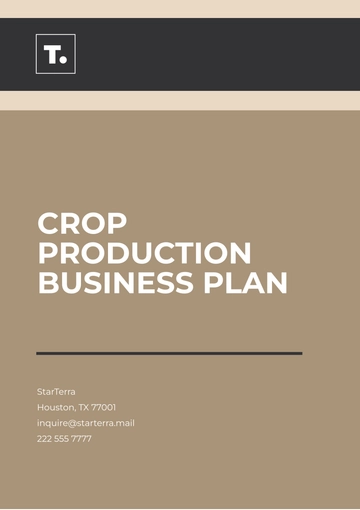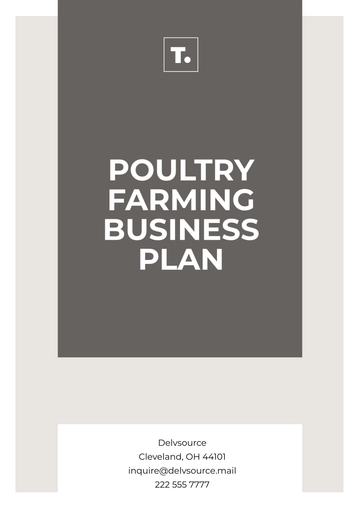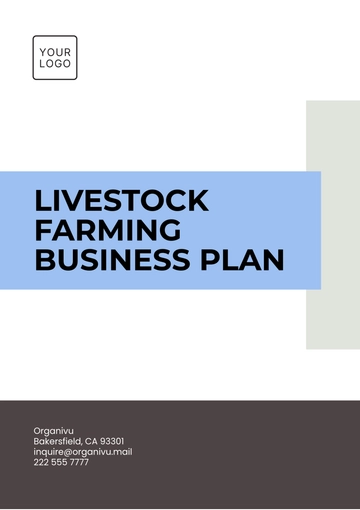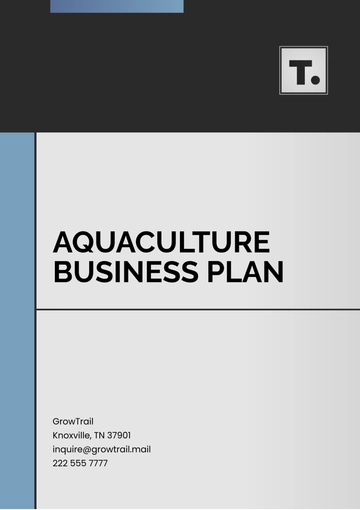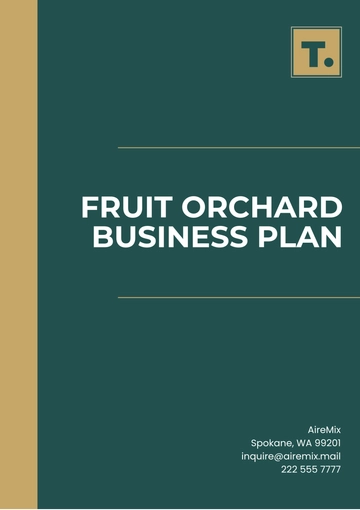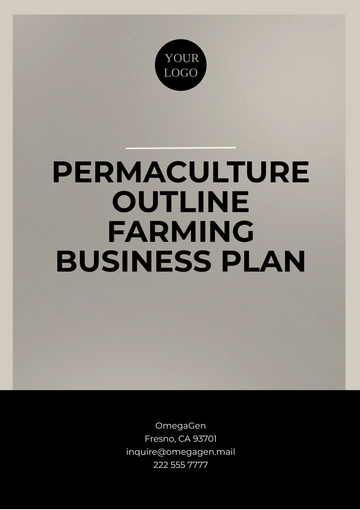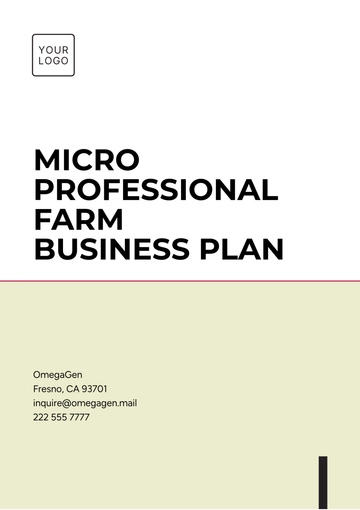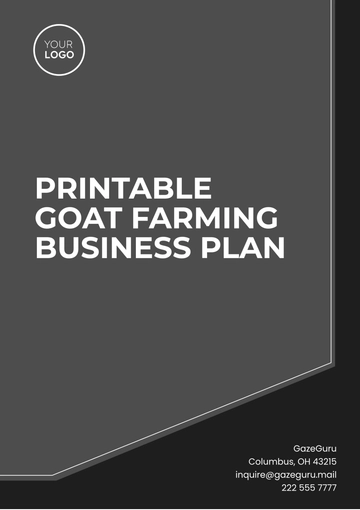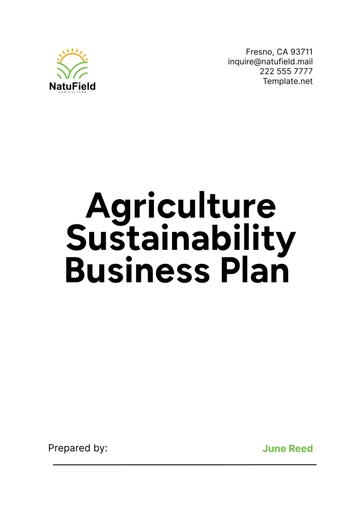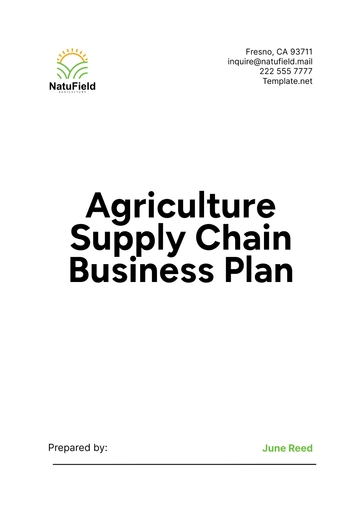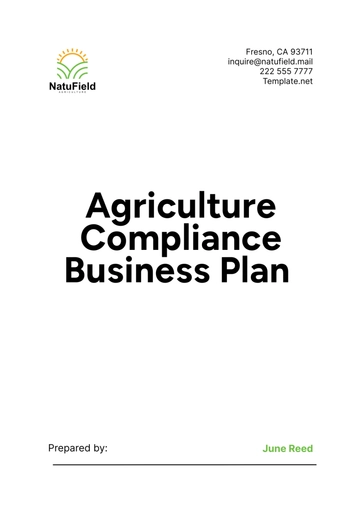Free Aquaculture Business Plan

Prepared By: [YOUR NAME]
Company: [YOUR COMPANY NAME]
Date: [DATE]
I. Executive Summary
The aquaculture industry presents a lucrative opportunity for sustainable and profitable business growth. This business plan outlines the objectives, strategies, and financial projections for establishing a successful aquaculture business. With the increasing demand for seafood and the depletion of wild fish stocks, aquaculture offers a viable solution to meet global seafood needs.
II. Business Description
A. Company Overview
The aquaculture business will focus on the farming of high-demand fish and shellfish species. Our company aims to produce high-quality seafood products that are both environmentally sustainable and economically viable.
B. Objectives
To become a leading provider of high-quality aquaculture products in the local and international markets.
To implement sustainable farming practices that minimize environmental impact.
To achieve a significant market share within the first five years of operation.
To ensure profitability while delivering value to shareholders and improving local economies.
III. Market Analysis
A. Industry Overview
The global aquaculture industry is experiencing substantial growth due to the increasing demand for seafood, advancements in aquaculture technologies, and a shift towards sustainable food production. This trend is expected to continue, providing significant opportunities for new entrants.
B. Target Market
Our primary target market includes local and international seafood distributors, grocery stores, restaurants, and direct consumers seeking fresh and sustainable seafood options.
C. Competitive Analysis
Competitors in the industry range from small-scale local farms to large international aquaculture corporations. Our competitive advantage lies in our commitment to sustainability, advanced farming techniques, and high-quality product offerings.
IV. Marketing Strategy
A. Product Strategy
We will offer a diverse range of high-quality, sustainably farmed fish and shellfish products. Our focus will be on species with high market demand and the potential for premium pricing.
B. Pricing Strategy
Our pricing strategy will be competitive yet reflective of the superior quality and sustainability of our products. We will employ a tiered pricing strategy to cater to different segments of the market.
C. Promotion Strategy
The promotion of our aquaculture products will involve a mix of digital marketing, participation in trade shows, collaborations with environmental organizations, and direct outreach to potential clients. We will emphasize our commitment to sustainable practices in all promotional efforts.
D. Distribution Strategy
We plan to distribute our products through direct sales to retailers, partnerships with seafood distributors, and the provision of home delivery options to direct consumers. Strategic partnerships with local transportation services will ensure efficient delivery.
V. Operations Plan
A. Location and Facilities
The aquaculture farm will be located in a coastal area with access to clean water sources. The facility will include state-of-the-art fish tanks, hatcheries, and processing units to ensure efficient farming and processing operations.
B. Production Plan
Species | Annual Production (Tons) | Market Value per Ton ($) |
|---|---|---|
Salmon | 500 | 8,000 |
Shrimp | 300 | 6,500 |
Tilapia | 200 | 3,000 |
C. Staffing Plan
The business will employ a team of experienced aquaculture specialists, including marine biologists, technicians, and operational staff. Training and development programs will be implemented to ensure staff are well-equipped to maintain high production standards.
VI. Financial Plan
A. Startup Costs
Land and Facility Development: $500,000
Equipment Purchase: $300,000
Licensing and Permits: $50,000
Working Capital: $150,000
B. Revenue Projections
We project steady revenue growth over the first five years of operation, driven by increased production capacity and market expansion.
Year | Projected Revenue ($) | Projected Expenses ($) | Projected Profit ($) |
|---|---|---|---|
Year 1 | 1,200,000 | 1,000,000 | 200,000 |
Year 2 | 1,500,000 | 1,100,000 | 400,000 |
Year 3 | 2,000,000 | 1,250,000 | 750,000 |
Year 4 | 2,500,000 | 1,400,000 | 1,100,000 |
Year 5 | 3,000,000 | 1,550,000 | 1,450,000 |
VII. Conclusion
The aquaculture business plan demonstrates a comprehensive approach to establishing a successful venture in the seafood industry. With a focus on sustainable practices and high-quality products, our company is poised to capture significant market share and deliver value to its stakeholders.
- 100% Customizable, free editor
- Access 1 Million+ Templates, photo’s & graphics
- Download or share as a template
- Click and replace photos, graphics, text, backgrounds
- Resize, crop, AI write & more
- Access advanced editor
You may also like
- One Page Business Plan
- Coffee Shop Business Plan
- Restaurant Business Plan
- Food Business Plan
- Real Estate Business Plan
- Executive Summary Business Plan
- Cover Page Business Plan
- Nonprofit Business Plan
- Daycare Business Plan
- Construction Business Plan
- Startup Business Plan
- Medical Business Plan
- Bakery Business Plan
- Service Plan
- Hotel Business Plan
- Catering Business Plan
- School Business Plan
- Healthcare Business Plan
- Transportation Plan
- Sports Plan
- Car Wash Business Plan
- Salon Business Plan
- Clothing Business Plan
- Farming Business Plan
- Boutique Plan


